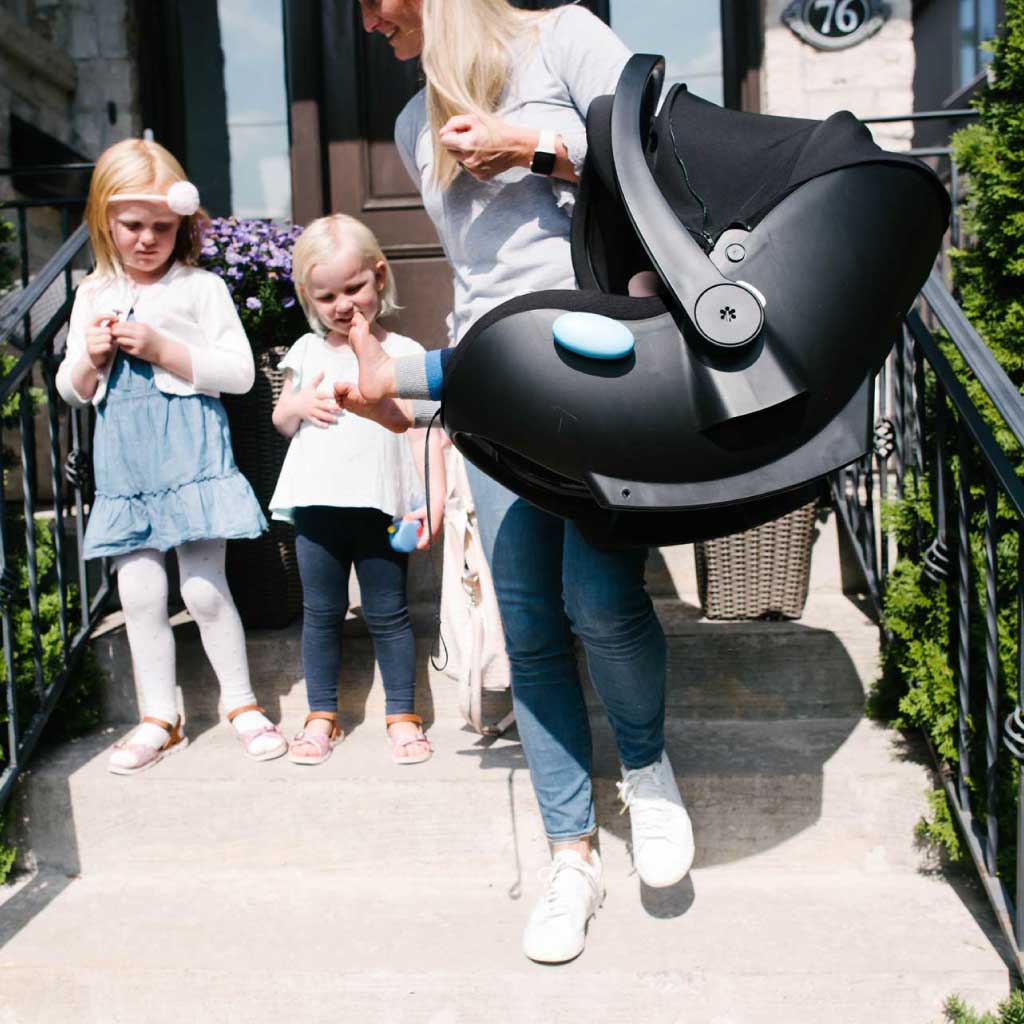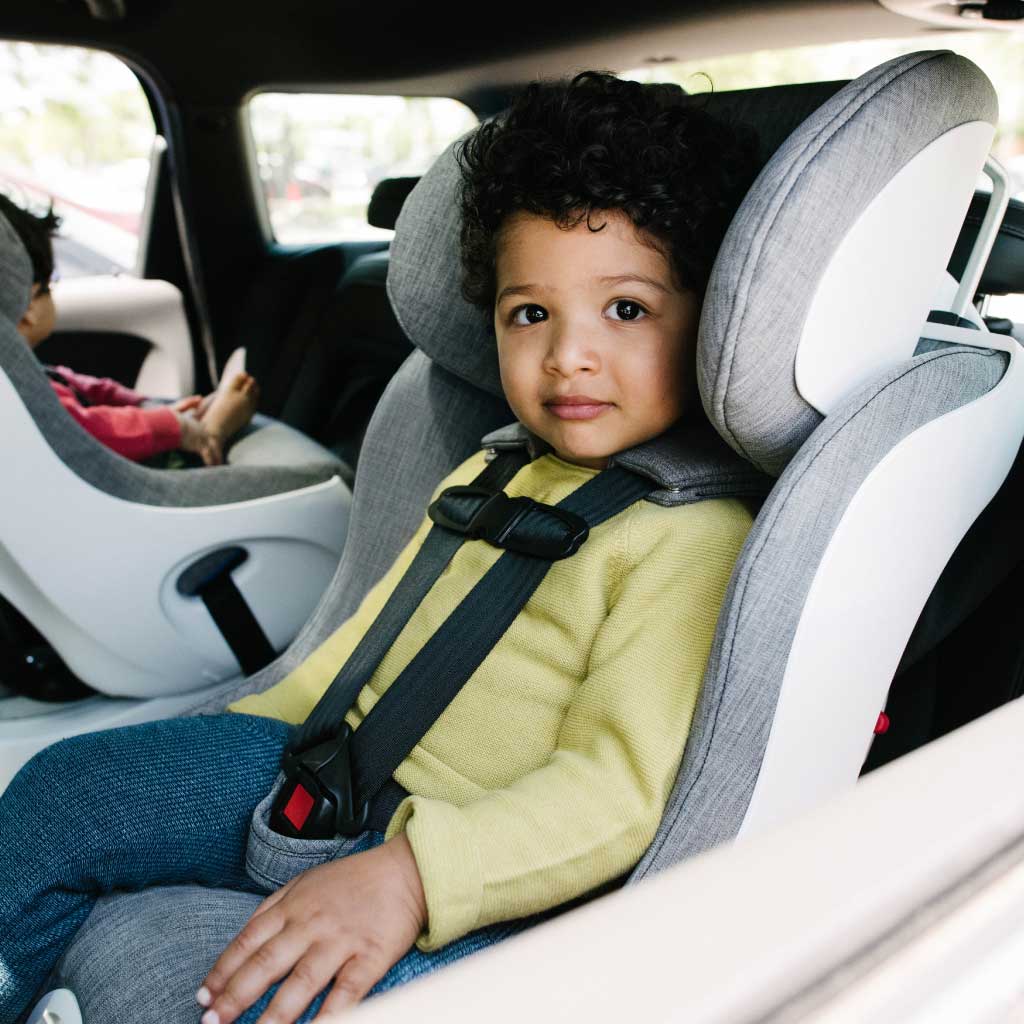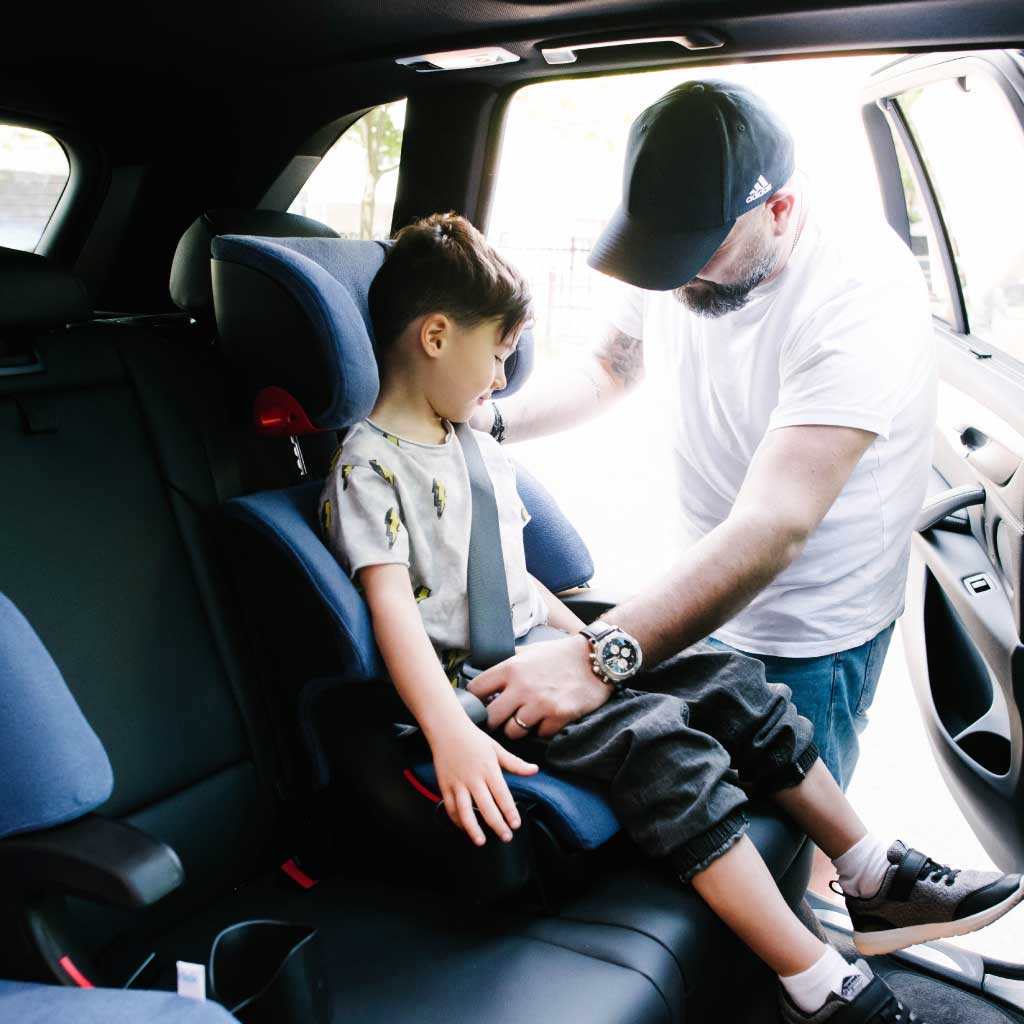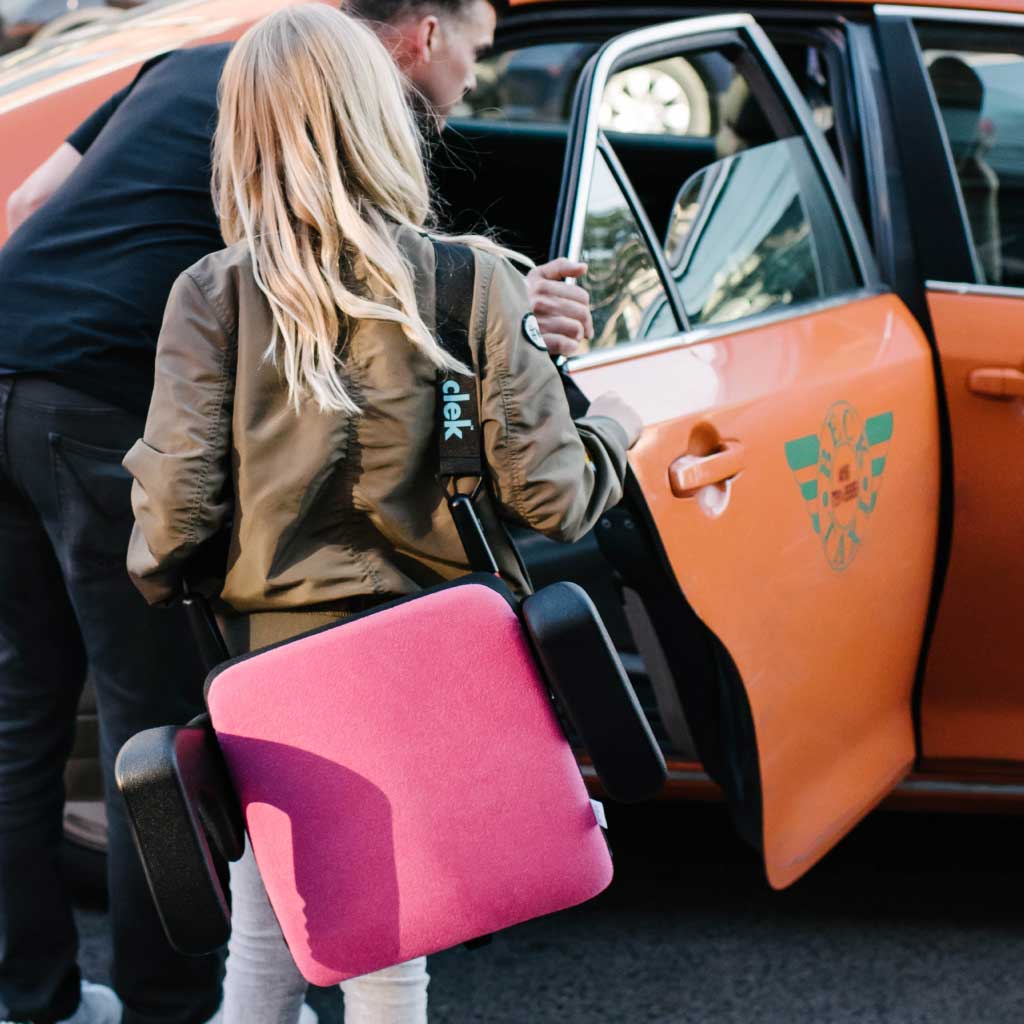This content was originally published by our friends at Vancouver Island Car Seat Technicians - an excellent resource for parents looking for child passenger safety tips!
In an effort to save time, change room space, congestion in hallways and lobbies, and improve the flow of kid (and parent) traffic we’ve had many parents ask us if it’s safe to dress their kids in their hockey gear at home, and arrive at the rink ready to play. As minor sports teams work out return-to-play plans while making COVID-19 precautions, we anticipate this issue coming up more and more.
Turns out none of us have hockey-playing children, so we surveyed some other CPSTs who are also hockey parents, and bring you their best advice.
Is it safe to wear hockey gear in the car seat or booster seat?
The short answer: nope. And here’s why.
Gear — pants and shoulder pads — interferes quite a lot with how the seat belt or harness fits on the body.
If the harness or seat belt doesn’t fit it can’t do its job: keeping your child in the car in the event of a crash.
In most places, depending on the exact wording of the relevant province or territory’s Highway Traffic Act or Motor Vehicle Act or associated regulations, that inability to fit properly or be used properly would be illegal.
If a parent called the manufacturer of their seat to ask if wearing gear in the seat was okay we are quite certain the answer would be absolutely not. Manufacturers want their products to keep kids safe, and the bulky and unyielding addition of sports padding and gear makes that impossible to do.
Hockey gear: keeps your child safe on the ice.
Car seats and booster seats: keeps your child safe in the car.
Unfortunately they don’t cooperate and can’t be mixed.
What about helmets and other gear?
We don’t recommend anyone wear a helmet in the car. Helmets add extra weight to the head, which in a crash, puts even more strain on the neck and spine. Wearing a helmet in a 5-point harness is actually not just like a race car driver, where there is a 6th point of attachment for the helmet called a HANS device. Read more about that here, if you’re interested.
Anyway, back to the hockey gear dilemma!
How much of a difference can wearing gear, or not, really make in a crash?
Why is using a car seat or booster seat properly so important? Because it can reduce the risk of death or injury by up to 71%. Considering that motor vehicle crashes are a leading cause of death of kids due to unintentional injury in Canada, that’s too important to ignore.
The most applicable instructions we have to address harness or seat belt fit are right in the car seat and booster seat manuals themselves. For example.
For Clek Car Seats:
- Child must be dressed in clothing with arms and legs that will not interfere with buckling and snugly adjusting harness.
In cold weather, DO NOT dress the child in bulky clothing like snowsuits if the child is riding in a child restraint. Bulky coats/snowsuits make it difficult to properly tighten the harness to the child, which may allow the child to be ejected from the restraint during a crash.
So what can be done to make the transition from car to ice a little easier?
So there is the whole list of what not to do, but that doesn’t help a frazzled parent trying to wrangle a child into their gear, and it doesn’t ease congestion at the rink. What are players to do? Here are some tips for how to keep kids safe in the car, and dressed as quickly and painlessly as possible at the arena.
Wear base layers in the car
- Put on the thin, comfortable under-layers before leaving the house, thinking strategically about what can go on in advance without interfering with the harness or seat belt.
Put skates on at home
- Some parents we asked said that it does work for them to lace up before getting in the car. This will of course depend on your child’s ability to get in and out of the car with skates on, and how easy it is to get from the car to the arena, and how much you trust them not to slice up your upholstery. One parent recommended good skate guards to make this doable, or for even more stability and traction try SkaBoots.
The small town arena from my childhood would have made a good backup for the set of an Ultimate Beastmaster obstacle course, but hopefully yours is less icy with fewer snow banks. Lacing up at home would definitely speed things up.
It’s worth talking to arena management about anything they can do to make access easier for players walking in skates: would a change in ploughing make this doable for your players? Would rubber mats help? Be creative and think beyond your own family to make the rink more accessible for everyone.
Be strategic about other gear
- Is your player able to ride safely with shin pads in place? Jock?
- Some kids are able to drop their pants down to their shins in the car, buckle up, and then pull them back into place at the arena. You might have to do a test run to see what works and what doesn’t for your particular situation.
Is your vehicle a portable dressing room?
- Is there enough room in your vehicle to dress a player in the last layers while still in the car? If you drive a 3-row vehicle, do you have enough room to fold down the 3rd row and use the hatch? How about stowing or removing a 2nd row captain’s seat for the worst of the winter?
An organized hockey bag
- Knowing exactly where things are located in the gear bag will speed up the process. Avoid having to root around to find things. Involve your child in this process, especially if they will be doing more of the getting dressed independently. Pack and organize it how they find it useful, even if it’s not how you would do it.
One parent’s routine is like this:
- Put on base layer, neck guard, elbow pads, bottom gear, and skates with skate guards. When you get to the car, pop the cup out of the jock and drop pants to knees before buckling. At the rink, you put the cup back in, pull up pants, put on shoulder pads, jersey, helmet, gloves.
Practice with your child
- Can you teach your child to gear up more independently? They might surprise you with what they can do on their own if you practice. Figure out a routine that makes things easier for them to be be quick and focused. Is there a pneumonic that helps them remember the order? A song? When mine were little this rhyme helped them remember the steps to get ready for bed: toilet, flush, wash hands, brush. Sometimes I notice I am humming it at bedtime…to myself.

It works for this hockey player to have his hockey socks and pants on; he just needs to pull his pants on at the rink.
Don’t mistake comfort and convenience for safety
Ultimately it all comes down to this, which is also true for child passenger safety every day of the year.
Is it time consuming and annoying? Yes.
Are these extra steps necessary to keep kids safe in the car – the most dangerous place most of them are every day? Also yes.
Enlist the support of other families, coaches, and league leadership to make sure you are doing what you can to help kids arrive safely to the rink. Team work on this one will make all the difference to managing during this new normal, and keeping everyone safe on and off the ice.
Additional Resources:
The Ministry of Transportation Ontario (MTO) agrees, and has some shareable resources, including:
About the Author:
Jen Shapka is a mom of two young girls, a military spouse, and a teacher by training. Her interest in car seats began while pregnant and living in Florida, after she discovered quite accidentally that a US seat could not be imported to Canada and used legally there. Much research ensued, and the realization that none of her friends really knew much about car seats either pushed her to become certified as a Child Passenger Safety Technician (CPST) in 2010 in Ottawa through SEATS For Kids. At one time living in Comox, BC, and then transplanted to central Ontario and then Winnipeg, Jen volunteers in her community, and operates Greybird Consulting, a small child passenger safety education business. Jen became an instructor with CPSAC in 2012 to teach and certify new technicians. In the hundreds of seats that Jen has worked with she’s only seen five six perfect ones. A refusal to accept that rate of misuse and a natural teaching ability drive Jen’s passion for child passenger safety.




